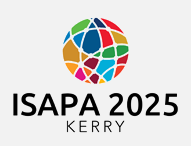Start Date
17-6-2025 9:00 AM
End Date
17-6-2025 10:30 AM
Abstract
Introduction The Universal Design for Learning (UDL) presents itself as a new approach to assist the diversity that exists in educational contexts, with the objectives of inclusion, equity, flexibility and accessibility, allowing the use of various methodologies and teaching/learning and assessment tools, diversified, allowing the student success (Fauzi, 2024). In Physical Education there is a need to develop and present research within the scope of the application of UDL, bringing new contributions to the development of scientifically based knowledge and practice so that PE teachers can make scientifically supported decisions (Heagele, 2024). Methodology A search was carried out in several databases such as SciELO; Taylor & Francis; Pubmed; Sage Journals, where texts were selected about the use of DUA in PE classes. Specific keywords and Boolean operators were used, and inclusion and exclusion criteria were defined. Results The results presented by the seven selected articles, after reading them in full, highlight the importance of implementing the UDL principles for more effective inclusion and learning success in PE classes. Conclusions It is concluded that there is a need to publicize and encourage PE teachers to use this model and academics to develop more studies to provide more and better grounds for the use of UDL in PE.
Recommended Citation
Lourenço, Carla and RAKAA, Omar BEN, "Universal Design for Learning to Applied to Physical Education" (2025). International Symposium of Adapted Physical Activity and International Symposium on Physical Activity and Visual Impairment and Deafblindness. 23.
https://sword.mtu.ie/isapa/2025/day2/23
Universal Design for Learning to Applied to Physical Education
Introduction The Universal Design for Learning (UDL) presents itself as a new approach to assist the diversity that exists in educational contexts, with the objectives of inclusion, equity, flexibility and accessibility, allowing the use of various methodologies and teaching/learning and assessment tools, diversified, allowing the student success (Fauzi, 2024). In Physical Education there is a need to develop and present research within the scope of the application of UDL, bringing new contributions to the development of scientifically based knowledge and practice so that PE teachers can make scientifically supported decisions (Heagele, 2024). Methodology A search was carried out in several databases such as SciELO; Taylor & Francis; Pubmed; Sage Journals, where texts were selected about the use of DUA in PE classes. Specific keywords and Boolean operators were used, and inclusion and exclusion criteria were defined. Results The results presented by the seven selected articles, after reading them in full, highlight the importance of implementing the UDL principles for more effective inclusion and learning success in PE classes. Conclusions It is concluded that there is a need to publicize and encourage PE teachers to use this model and academics to develop more studies to provide more and better grounds for the use of UDL in PE.

